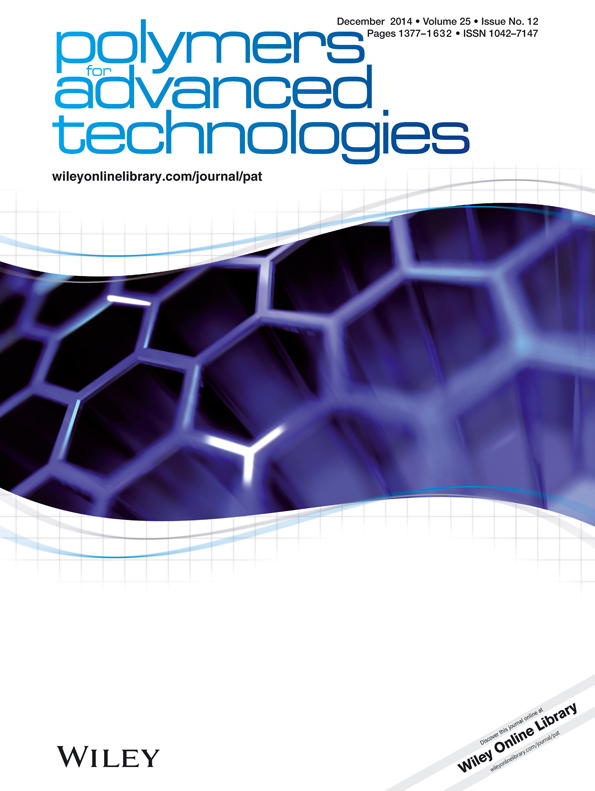Effects of compatibility of poly(l-lactic-acid) and thermoplastic polyurethane on mechanical property of blend fiber†
This article is published in Polymers for Advanced Technologies as a special issue on 2014 Global Conference on Polymer and Composite Materials (PCM 2014), edited by Prof. Moshe Narkis.
Abstract
Blending poly(l-lactic-acid) (PLLA) and thermoplastic polyurethane (TPU) has been performed in an effort to toughen PLLA without compromising its biodegradability and biocompatibility. The mixing enthalpy calculation of PLLA and TPU predicted that the blend was a thermodynamic miscible system. The viscoelastic properties and phase morphologies of PLLA/TPU blends were investigated further by dynamic mechanical analysis and scanning electron microscopy. It was found that the blend was a partially miscible system. The dynamic mechanical analysis showed that Tg of PLLA and TPU shifted toward with TPU content increasing. Scanning electron microscopy photos showed that the morphologies of the blends changed from a sea island structure to a bicontinuous structure as an increment in TPU content, which suggested that the miscibility of PLLA and TPU was enhanced when the TPU increased. PLLA/TPU blend fibers were fabricated. With the TPU content increasing from 0 wt% to 30 wt%, the tensile strength and initial modulus of blend fibers decreased first then increased, while elongation at break and fracture work gradually increased. The change of tensile properties indicated the toughening effects of TPU on PLLA fibers, also suggested that the formation of blend fibers was influenced by the blend rheological behavior other than the compatibility. Copyright © 2014 John Wiley & Sons, Ltd.




